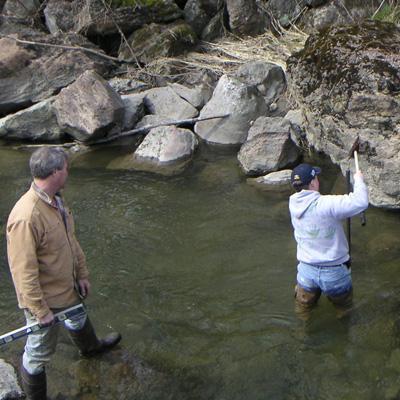Applying Spatially Explicit Dynamic Landscape Modeling to Forest Watershed Planning and Adaptive Management in the Northern Forest

Diffuse pollution (with no direct source point) from urban storm water and agricultural run-off are among the leading causes of water pollution in the United States. Most management plans addressing diffuse pollution are driven by disconnected economic, political, and ecological interests that are difficult to reconcile. Integrated watershed management, best achieved through a methodical, citizen participatory approach, aims to protect and improve water resources while considering community economic and social concerns. This approach was used in the small watershed of St. Albans Bay, Vermont, where algal blooms in Lake Champlain caused by heavy phosphorus loads have signaled the need for intervention since the 1970s.
NSRC researchers and stakeholders from the community worked together to determine the relative load of phosphorus from all sources and used computer modeling to identify the most cost-effective interventions to achieve target reductions. Dissolved phosphorus in surface run-off from the agricultural landscape accounts for 41% of the total load to St. Albans Bay watershed streams. Direct discharge from barnyards and storm water loads, primarily from road sand wash-off, are also significant sources.
Achieving target reductions in the short-term requires reducing soil phosphorus run-off from farm fields, treating barnyard run-off, and reducing road sand wash-off using road sweepers. Long-term nutrient balance in the watershed requires reducing fertilizer use in agricultural and urban areas and lowering manure application rates. Participatory modeling generated solutions with greater community acceptance than stakeholders previously envisioned, and local decision makers are now implementing solutions identified as most cost-effective. Similar approaches can be used in watershed planning throughout the Northern Forest region.
Download printable version [PDF]
Download full final report [PDF]
